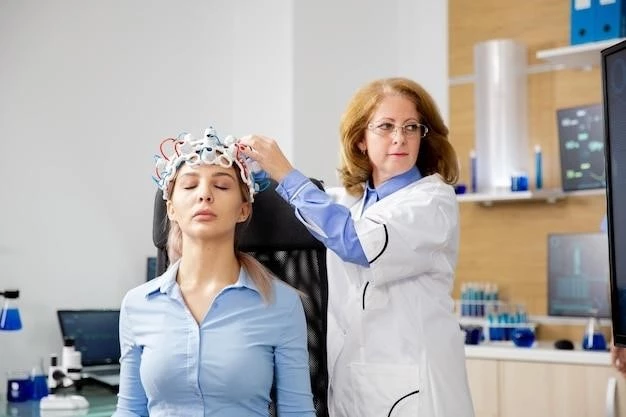Causes of Craniostenosis
Craniostenosis, a condition where the skull bones fuse prematurely, can have various causes. Some common factors include genetic mutations, syndromes like Apert or Crouzon syndrome, exposure to certain medications during pregnancy, and environmental factors. Genetic mutations play a significant role, affecting the growth and development of skull bones. Syndromes like Apert or Crouzon syndrome are known to be associated with craniostenosis. Additionally, exposure to certain medications while pregnant, such as antiseizure drugs, can contribute to the development of this condition. Environmental factors like maternal smoking or alcohol consumption during pregnancy may also play a role in causing craniostenosis. Understanding these causes is vital in diagnosing and treating individuals affected by this condition.
Symptoms of Craniostenosis
Recognizing the symptoms of craniostenosis is crucial for timely intervention. Common signs include an abnormal head shape, a ridge along the affected suture line, early closure of soft spots on a baby’s head, and developmental delays. Babies may have feeding difficulties, vision problems, and increased irritability. As the child grows, symptoms like headaches, learning difficulties, and hearing loss may become apparent. Monitoring these signs and symptoms closely is essential for early detection and management of craniostenosis. If you notice any of these symptoms in yourself or a loved one, seek medical evaluation promptly.
Diagnosis of Craniostenosis
Diagnosing craniostenosis involves a series of assessments to confirm the condition. A physical examination, imaging tests like X-rays or CT scans, and genetic testing may be utilized. During a physical exam, a healthcare provider will assess the shape of the head and feel for abnormal ridges or sutures. Imaging tests help visualize the skull and identify premature bone fusion. Genetic testing can determine if a specific syndrome is present. Early diagnosis is key to planning appropriate treatment. If you suspect craniostenosis based on symptoms or have a family history of the condition, consult a healthcare professional for a thorough evaluation.
Treatment Options for Craniostenosis
Several treatment options exist for craniostenosis, depending on the severity and specific needs of the individual. Non-surgical interventions include physical therapy to address developmental delays and specialized helmets to encourage proper skull growth. Surgical options involve procedures to release fused sutures and reshape the skull bones. The choice of treatment is personalized based on the patient’s age, symptoms, and underlying causes. Early intervention can prevent complications and support optimal skull development. Collaborate closely with healthcare providers to determine the most effective treatment plan tailored to the unique requirements of the individual affected by craniostenosis.
Surgical Procedures for Craniostenosis
Surgical intervention for craniostenosis aims to correct premature fusion of the skull bones. Common procedures include cranial vault remodeling, endoscopic strip craniectomy, and minimally invasive surgery. During these surgeries, specialized techniques are employed to release fused sutures, reshape the skull, and facilitate normal brain growth. The type of procedure recommended will depend on the individual’s age, overall health, and the extent of skull fusion. Surgical correction is often effective in relieving pressure on the brain and improving head shape. It is essential to consult with a skilled surgical team to determine the most appropriate approach for treating craniostenosis in each case.
Recovery and Rehabilitation after Craniostenosis Surgery
After craniostenosis surgery, a structured recovery and rehabilitation program is vital for optimal outcomes. This may include close monitoring by healthcare professionals, pain management, and physical therapy to aid in skull reshaping and development. Rehabilitation efforts focus on enhancing motor skills, cognitive function, and overall quality of life. It is crucial for patients to follow post-operative care instructions diligently, attend follow-up appointments, and engage in recommended exercises. The support of family members and caregivers plays a key role in the recovery process. By actively participating in rehabilitation and adhering to treatment plans, individuals can enhance their recovery and reach their full potential following craniostenosis surgery.
Long-Term Outlook for Patients with Craniostenosis
The long-term outlook for patients with craniostenosis can vary based on the severity of the condition, the timeliness of intervention, and the individual’s response to treatment. With appropriate diagnosis and management, many patients can experience improved head shape, cognitive development, and overall quality of life. Regular follow-up appointments with healthcare providers are crucial to monitor progress, address any long-term effects, and make adjustments to the treatment plan as needed. Families and caregivers should remain vigilant for any signs of recurrence or new symptoms and seek prompt medical attention if concerns arise. Staying informed, adhering to recommended care strategies, and maintaining open communication with the healthcare team can contribute to a positive long-term outcome for individuals affected by craniostenosis.
Research Advancements in the Field of Craniostenosis

Ongoing research in the field of craniostenosis continues to drive advancements in diagnosis, treatment, and long-term management of the condition. Studies focus on identifying novel genetic markers, exploring non-invasive treatment options, and enhancing surgical techniques to improve outcomes for patients. Collaborative efforts between medical professionals, researchers, and advocacy groups aim to expand our understanding of craniostenosis and develop innovative approaches to care. Through clinical trials and multidisciplinary research initiatives, the medical community strives to enhance patient outcomes, minimize risks, and improve quality of life for individuals affected by craniostenosis. Stay informed about the latest research developments to access cutting-edge treatments and therapies that may positively impact the management of craniostenosis.
Conclusion
In conclusion, understanding craniostenosis is crucial for early detection and effective management of this condition. By recognizing the causes, symptoms, and diagnostic methods, individuals and healthcare providers can work together to formulate personalized treatment plans. From non-surgical interventions to specialized surgical procedures, a range of options exist to address craniostenosis and promote optimal outcomes. Recovery and rehabilitation play a significant role in the post-operative journey, emphasizing the importance of continuous care and support. Long-term outlooks for patients with craniostenosis are promising, with ongoing research driving advancements in the field; By staying informed and engaged in care, individuals affected by craniostenosis can navigate their health journey with confidence and hope for a brighter future.
